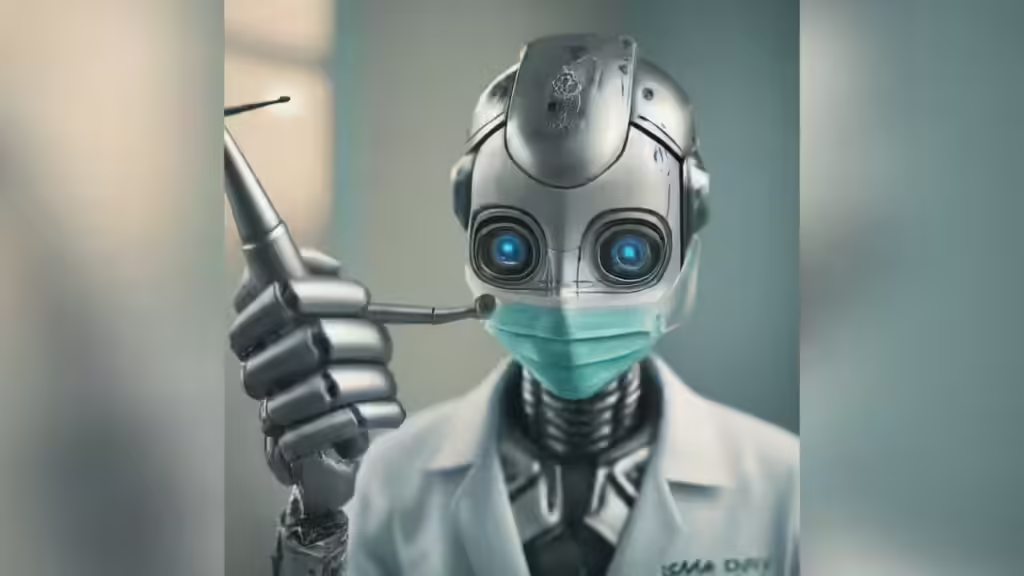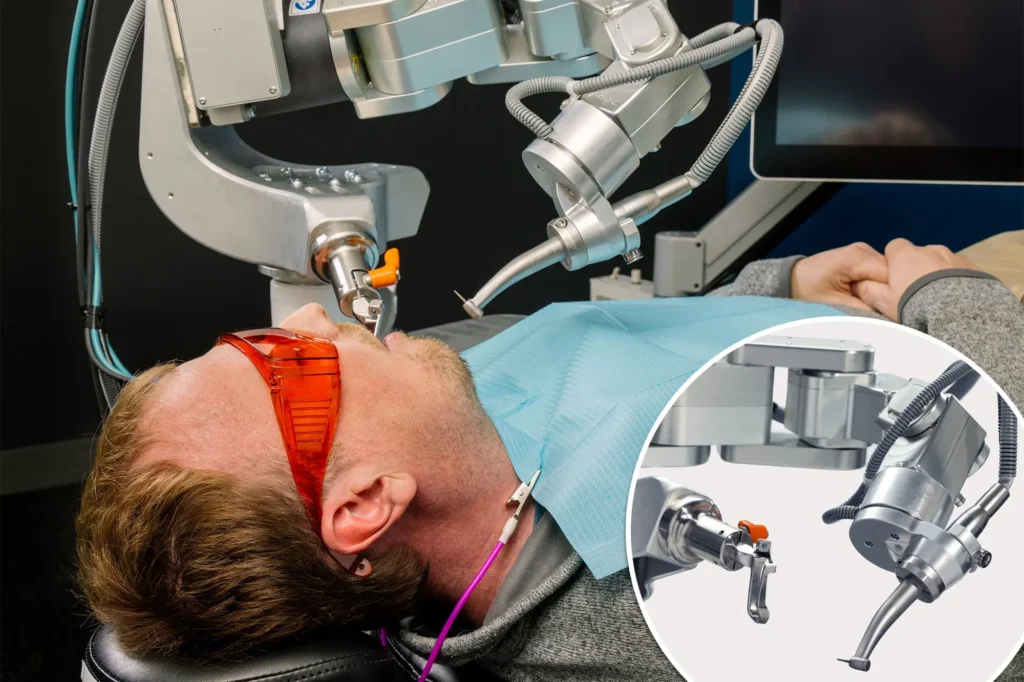AI-powered robot dentist operated on a live human for the first time
An AI-powered robot dentist operated and performed dental procedures on a live human based in Boston for the first time in history. This may sound like a terrible encounter for many who usually visit the dentist.
The robot performed its first unsupervised operation but it did not seem all that scary. Because everything went following plan and treatment was completed successfully.
The US-based company in Boston Perceptive created this AI-powered robot. It successfully finished a crown replacement process on a living human in just 15 minutes. It was eight times faster than a human dental professional.

The crown replacement process refers to a dental procedural operation where dentists use crowns as artificial material to restore weak, damaged, or decaying teeth.
The patient’s mouth had to be the first traced using a 3D scanner to perform this extraordinary technique. After that, an autonomous robot driven by artificial intelligence planned and performed the dental operation.
Dr. Chris Ciriello, creator of the company Perceptive stated this medical breakthrough improves the precision and efficiency of dental procedures. It improves access to better dental care for improved patient experience and clinical outcomes.
These operations usually necessitate that patients visit their dentists a minimum of two times. Hence, each appointment lasts approximately sixty minutes to remove the old crown and install the new one.
Perceptive claims that this AI-powered dentist robot operated accurately on a live human within only fifteen minutes while ensuring patient safety.

The company developed this technology with funding of $30 million from investors such as a dentist Dr. Edward Zuckerberg. He is also the father of Meta owner Mark Zuckerberg.
Before performing this operation, the human assistant must create a three-dimensional (3D) model of the patient’s mouth using a handheld scanner.
This model allows for the detection of dental fluid and check below the gum line to ensure patient safety. According to Perceptive, the method detects cavities and other types of damage with 90% accuracy.
Read More:
- Sea creature turns into a baby when it is stressed out showing time travel
- Realme Narzo 70 Turbo 5G launch date, features, specifications & price
- European Space Agency printed 3D metal part in space for first time
- Earth’s mysterious Alaska triangle where over 20,000 people disappeared
- Philips Hue launched a new smart lighting solution for kitchen
- NASA to launch life-searching spacecraft to Jupiter’s moon Europa
Share this content:










Post Comment